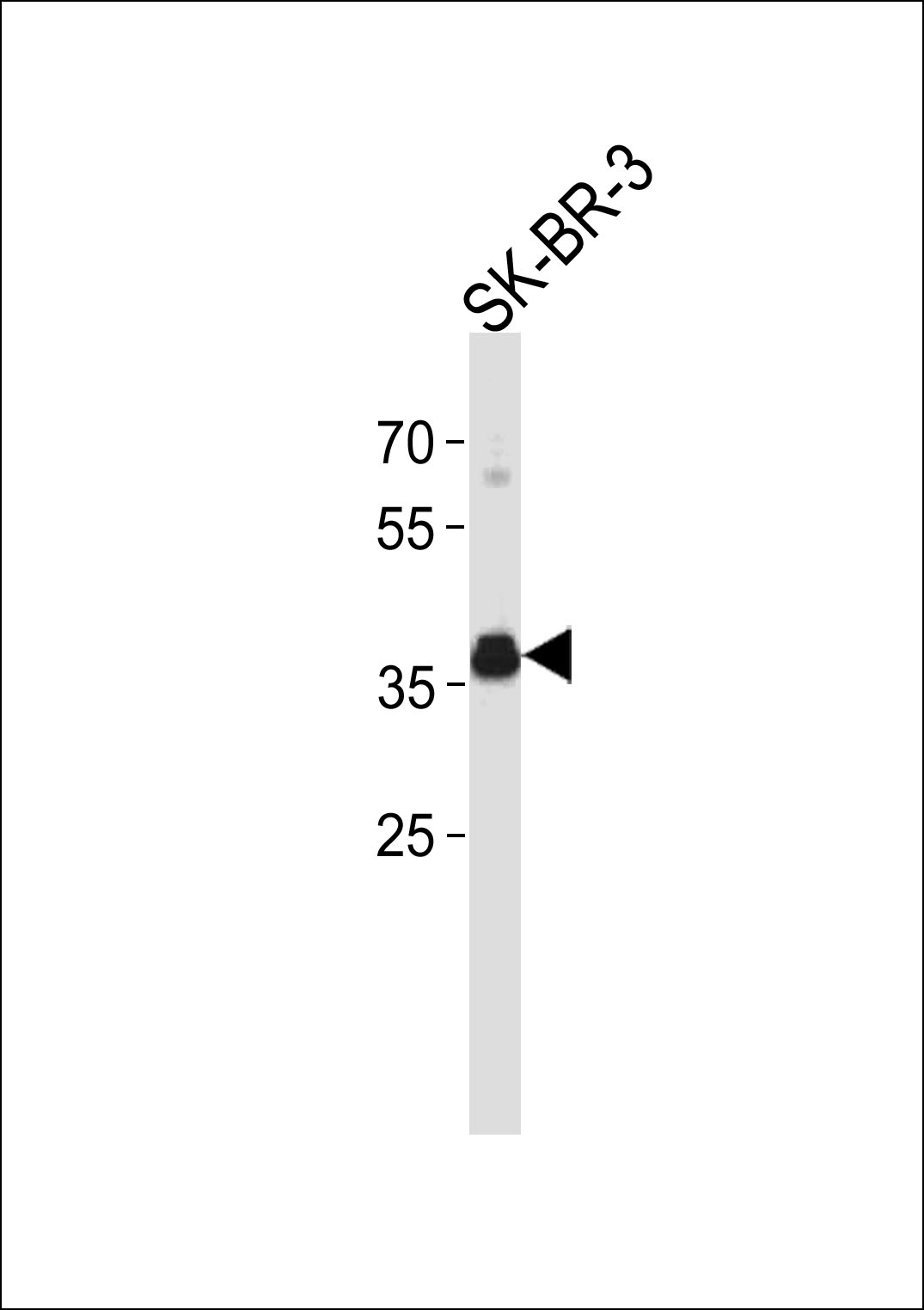产品名称
ESR1 isoform4 Rabbit Polyclonal Antibody(C-term)
别名
ESR1; ESR; NR3A1; Estrogen receptor; ER-alpha; Estradiol receptor; Nuclear receptor subfamily 3 group A member 1
存储缓冲液
Purified polyclonal antibody supplied in PBS with 0.09% (W/V) New type preservative N. This antibody is purified through a protein A column, followed by peptide affinity purification.
Human Gene ID
NP_000116.2;NP_001116212.1;NP_001116213.1;NP_001116214.1
Human Swissprot No.
P03372
特异性
This ESR1 isoform4 antibody is generated from rabbits immunized with a KLH conjugated synthetic peptide between 283-312 amino acids from the C-terminal region of human ESR1 isoform4.
运输及保存条件
Maintain refrigerated at 2-8°C for up to 2 weeks. For long term storage store at -20°C in small aliquots to prevent freeze-thaw cycles.
背景介绍
This gene encodes an estrogen receptor, a ligand-activated
transcription factor composed of several domains important for
hormone binding, DNA binding, and activation of transcription. The
protein localizes to the nucleus where it may form a homodimer or a
heterodimer with estrogen receptor 2. Estrogen and its receptors
are essential for sexual development and reproductive function, but
also play a role in other tissues such as bone. Estrogen receptors
are also involved in pathological processes including breast
cancer, endometrial cancer, and osteoporosis. Alternative splicing
results in several transcript variants, which differ in their 5'
UTRs and use different promoters.
组织表达
Widely expressed (PubMed:10970861). Not expressed in the pituitary gland (PubMed:10970861)
细胞定位
[Isoform 1]: Nucleus {ECO:0000255|PROSITE- ProRule:PRU00407, ECO:0000269|PubMed:12682286, ECO:0000269|PubMed:20074560}. Cytoplasm. Cell membrane; Peripheral membrane protein; Cytoplasmic side. Note=A minor fraction is associated with the inner membrane Nucleus. Golgi apparatus. Cell membrane. Note=Colocalizes with ZDHHC7 and ZDHHC21 in the Golgi apparatus where most probably palmitoylation occurs. Associated with the plasma membrane when palmitoylated
功能
Nuclear hormone receptor. The steroid hormones and their receptors are involved in the regulation of eukaryotic gene expression and affect cellular proliferation and differentiation in target tissues. Ligand-dependent nuclear transactivation involves either direct homodimer binding to a palindromic estrogen response element (ERE) sequence or association with other DNA-binding transcription factors, such as AP-1/c-Jun, c-Fos, ATF-2, Sp1 and Sp3, to mediate ERE- independent signaling. Ligand binding induces a conformational change allowing subsequent or combinatorial association with multiprotein coactivator complexes through LXXLL motifs of their respective components. Mutual transrepression occurs between the estrogen receptor (ER) and NF-kappa-B in a cell-type specific manner. Decreases NF-kappa- B DNA-binding activity and inhibits NF-kappa-B-mediated transcription from the IL6 promoter and displace RELA/p65 and associated coregulators from the promoter. Recruited to the NF-kappa-B response element of the CCL2 and IL8 promoters and can displace CREBBP. Present with NF-kappa-B components RELA/p65 and NFKB1/p50 on ERE sequences. Can also act synergistically with NF-kappa-B to activate transcription involving respective recruitment adjacent response elements; the function involves CREBBP. Can activate the transcriptional activity of TFF1. Also mediates membrane-initiated estrogen signaling involving various kinase cascades. Essential for MTA1-mediated transcriptional regulation of BRCA1 and BCAS3 (PubMed:
17922032).

